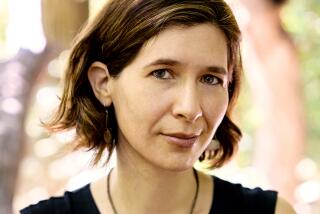Constantinople’s fall and the gate left open
The terminal events surrounding the fall of great empires have long been studied, pondered and argued over. Edward Gibbon’s “The Decline and Fall of the Roman Empire” comes to mind as one of the best documentations of these eventual apocalypses, as does the more recent seven-volume series on the history of political violence by William T. Vollmann called “Rising Up and Rising Down.”
But while these arduous reads likely scare away anyone but the scholarly or somewhat masochistic reader, Roger Crowley’s “1453: The Holy War for Constantinople and the Clash of Islam and the West” is an exercise in focused attention on the events surrounding the final year of the Byzantine Empire.
Though long having fallen into decay, the last days of that empire as told in “1453” may have come down to a single gate left unlocked during the height of battle. Certainly the sheer numbers of the attacking Turks, their mighty cannons, the religious zeal of jihad and their superior organization factored highly into how the battle was won. But if not for this turning point in the final attack on Constantinople -- -- the unlocked gate allowed the Turks to overcome the wall of Theodosius -- the Byzantine Empire may have withstood. If only a short while longer.
Crowley’s fascinating account of the years leading up to and the final sacking of Constantinople by the Ottoman Empire reads more like lively fiction than dry recounting of historical events. The characters, led by Mehmet II, the young leader of the Ottoman Turks, and Constantine XI, the wearying 57th emperor of a weakening Byzantium, are drawn in great detail from historical source material to bring them to life on the page.
While largely known as impatient, ambitious and ruthless, Mehmet II led the Turks to victory with the brilliant organization of his land and naval forces, as well as the utilization of siege tactics that were soon to render the castle walls across Europe nearly obsolete.
The battle for Constantinople of 1453 was the first to see the major use of “super-gun” cannons around 14 feet long. One monster cannon measured 27 feet long and accommodated “a monstrous stone shot eight feet in circumference weighing something over half a ton.” When first testing the weapon, Crowley notes Mehmet II sent a warning to those in the area that the noise could possibly strike people speechless or cause pregnant women to miscarry. The constant bombardment from those guns on the few thousand defenders of Constantinople became a daily source of fear and torment, seen by the prophetic in the city that their apocalypse was near.
Not only did Constantine have to heroically defend the city against this new form of attack, constantly using his knights to repair the wall which in turn further weakened his fighting force, he was also pressed to juggle internal strife in Constantinople as well. The schism between the Roman Catholic Church and the Orthodox Church of Byzantium led to bitter infighting and distrust between the Orthodox natives of Constantinople and groups of Catholic mercenaries from Genoese and Venetian colonies sent there to help defend the city. On a wider note, this schism was largely responsible for the delay of reinforcements as Roman Catholic Western Europe saw a weakened or defeated Byzantium more in their interest than its salvation.
The cataclysmic fall of Constantinople, and its eventual renaming as Istanbul, signaled the rise of the Ottoman Empire not only as a power in the Middle East, but also its expansion as a European one. It wasn’t until the 1680s when the Ottomans were halted in their westward advance at Vienna that this empire began its own terminal decline, and not until after World War I when it finally collapsed into the oblivion now known by its brothers of Byzantium.
But while these empires no longer exist, their reminders do live on and still factor into how Christian and Muslim coexist in Southeastern Europe. The flaring nationalisms and politicalization of religious heritage in the Balkans during the ‘90s, the long feud between Greeks and Turks in Cyprus, jihad and crusade as manifestations of religion hijacked for imperial means, and the contemporary acceptance or refusal to accept Turkey as a member of the newest empire in the region -- the European Union -- all serve as reminders of that region’s long and shaky past.
*
Michael Standaert is a regular contributor to Book Review. His first book, “Skipping Towards Armageddon,” will be published this fall.
More to Read
Sign up for our Book Club newsletter
Get the latest news, events and more from the Los Angeles Times Book Club, and help us get L.A. reading and talking.
You may occasionally receive promotional content from the Los Angeles Times.






